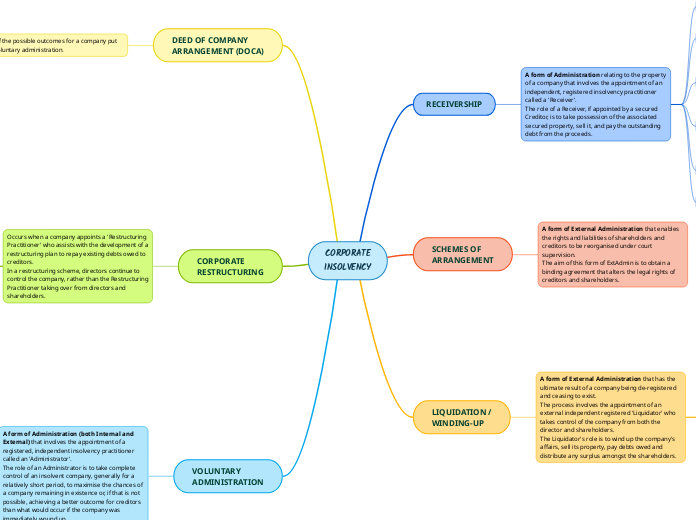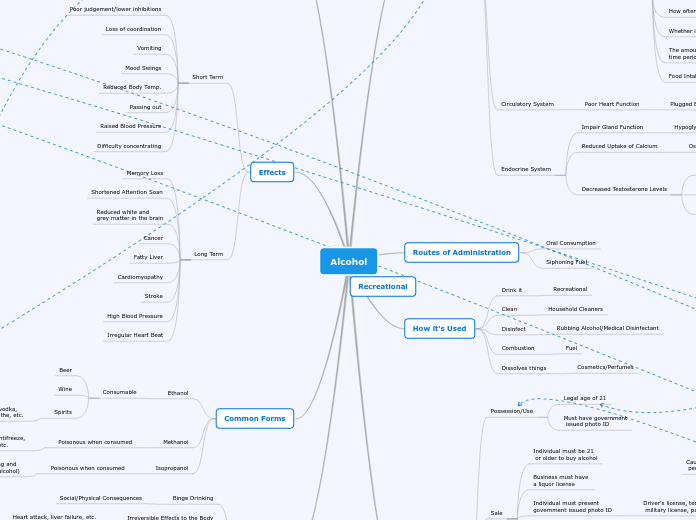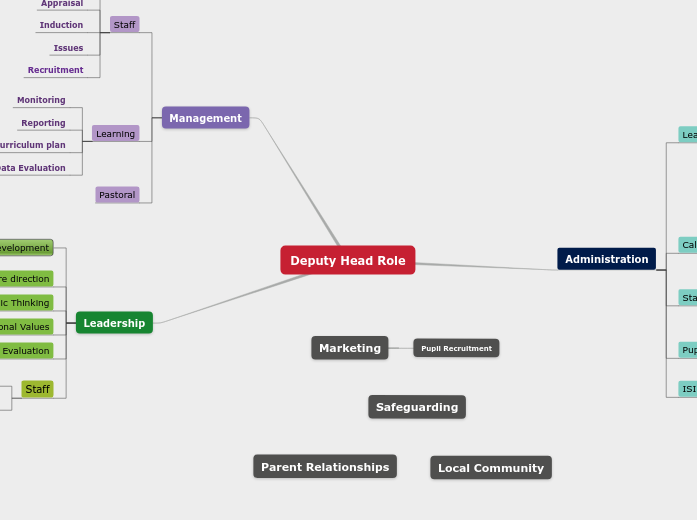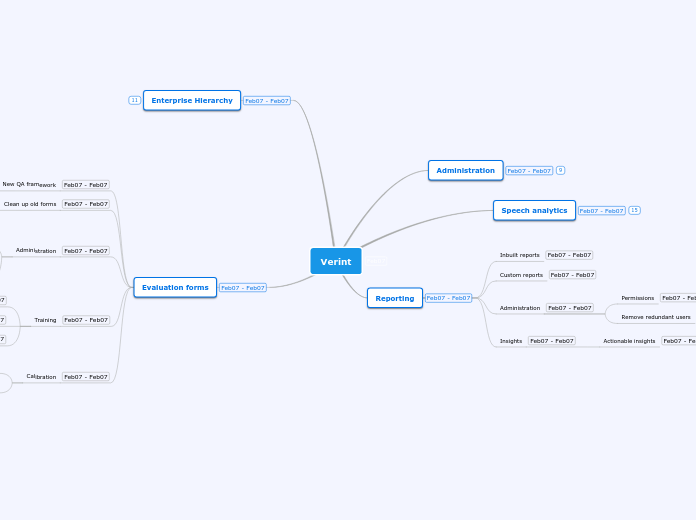CORPORATE
INSOLVENCY
title here
VOLUNTARY
ADMINISTRATION
A form of Administration (both Internal and External) that involves the appointment of a registered, independent insolvency practitioner called an 'Administrator'.
The role of an Administrator is to take complete control of an insolvent company, generally for a relatively short period, to maximise the chances of a company remaining in existence or, if that is not possible, achieving a better outcome for creditors than what would occur if the company was immediately wound up.
Effect of
Moratorium on claims against the Company
Exceptions
stay of proceedings
Meetings of Creditors
Duration
Administrator
Notification Requirements
Qualification Requirements
by Secured Party
by Liquidator
by Directors
CORPORATE
RESTRUCTURING
Occurs when a company appoints a 'Restructuring Practitioner' who assists with the development of a restructuring plan to repay existing debts owed to creditors.
In a restructuring scheme, directors continue to control the company, rather than the Restructuring Practitioner taking over from directors and shareholders.
Process: the
Restructuring Plan
Employees
Creditors
Company, Directors, and members
Company Eligibility
Restructuring Practitioner
Role
Appointment
DEED OF COMPANY
ARRANGEMENT (DOCA)
One of the possible outcomes for a company put into voluntary administration.
Termination & Invalidation
Variation
Effect
employees
company and officers
moratoriums
prevention of winding up applications
limitation of rights by court
creditors
Lessors / Owners
unsecured creditors
secured creditors
Execution
Terms
Purpose
LIQUIDATION /
WINDING-UP
A form of External Administration that has the ultimate result of a company being de-registered and ceasing to exist.
The process involves the appointment of an external independent registered 'Liquidator' who takes control of the company from both the director and shareholders.
The Liquidator's role is to wind up the company's affairs, sell its property, pay debts owed and distribute any surplus amongst the shareholders.
Liquidators
Termination of Liquidation
Voluntary Liquidation
Compulsory Liquidation
Reasons other than Insolvency
Due to Insolvency
Applications
Consequences for
abuse of process
Procedure
Permission
Eligibility
SCHEMES OF
ARRANGEMENT
A form of External Administration that enables the rights and liabilities of shareholders and creditors to be reorganised under court supervision.
The aim of this form of ExtAdmin is to obtain a binding agreement that alters the legal rights of creditors and shareholders.
RECEIVERSHIP
A form of Administration relating to the property of a company that involves the appointment of an independent, registered insolvency practitioner called a 'Receiver'.
The role of a Receiver, if appointed by a secured Creditor, is to take possession of the associated secured property, sell it, and pay the outstanding debt from the proceeds.
Duties
Liabilities
Breach of duty
Contracts
Duties
Satutory
Common Law
Powers
Your text here
To obtain information
To Sell
Appointment
by the Court
by Secured Creditors
Receiver and Receiver Managers









